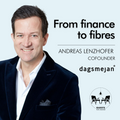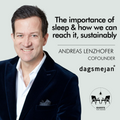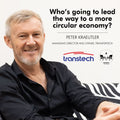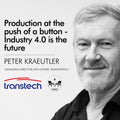Creativity in times of Corona
There is an allure of mystery and mysticism shrouding the creative process.
Yet, in truth, almost every person has creative potential.
However, what separates the great creatives is that they’ve learned how to navigate the creative process. They have discovered their own nuances, they are familiar with what works for them, and have learnt how to build an efficient methodology to manoeuvre through it. Call it “artistic irony” if you will, but most successful creatives are not even aware that there are documented phases to the process, outlined by various theorists over the years, yet they have developed habits that allow them to sail through it.
ANY CREATIVE PROCESS BECOMES A DANCE
At its heart, any creative process is about discovering something new within ourselves and then bringing that “something” into the world for others to experience and enjoy. The work of the artist, the visionary, the innovator, is to bridge their inner and outer worlds - taking something that only exists within their own mind and heart and soul and birthing it into a tangible form.
Any creative process becomes a dance between the inner and the outer; the unconscious and conscious mind; dreaming and doing; madness and method; solitary reflection and active collaboration.
Image by Vale Zmeykov from Unsplash
At its heart, any creative process is about discovering something new within ourselves and then bringing that “something” into the world for others to experience and enjoy. The work of the artist, the visionary, the innovator, is to bridge their inner and outer worlds - taking something that only exists within their own mind and heart and soul and birthing it into a tangible form.
Any creative process becomes a dance between the inner and the outer; the unconscious and conscious mind; dreaming and doing; madness and method; solitary reflection and active collaboration.
AN IMMERSION OF CREATIVITY
Creativity experts have generally outlined five classic steps. Not linear, these steps allow an understanding of where one may be within the process of creating their next masterpiece.
Before delving straight into a creative pursuit, there is a stage of preparation. Whether conscious or subconscious, preparation involves an immersion into the arena that you are choosing to work in. For a writer, this may involve reading books of a similar genre.
Image from Shutterstock
Before delving straight into a creative pursuit, there is a stage of preparation. Whether conscious or subconscious, preparation involves an immersion into the arena that you are choosing to work in. For a writer, this may involve reading books of a similar genre.
For a painter, this may involve researching different mediums that you are interested in working with. Within this stage, you are absorbing as much information as possible. It is hypothesized that within this stage, information is entering into the subconscious, where it will be made use of in future stages. Many include creating Pinterest boards into this phase.
Image by Nathana Rebouças from Unsplash
Creativity experts have generally outlined five classic steps. Not linear, these steps allow an understanding of where one may be within the process of creating their next masterpiece.
Before delving straight into a creative pursuit, there is a stage of preparation. Whether conscious or subconscious, preparation involves an immersion into the arena that you are choosing to work in. For a writer, this may involve reading books of a similar genre. For a painter, this may involve researching different mediums that you are interested in working with. Within this stage, you are absorbing as much information as possible. It is hypothesized that within this stage, information is entering into the subconscious, where it will be made use of in future stages. Many include creating Pinterest boards into this phase.
LET THE IDEAS SIMMER
Once the preparation of gathering and storing of this information has taken place, it starts to “simmer”, so to speak, in the back of your mind. What tends to happen is that the initial wave of inspiration hits, and carries you through the preparation. The idea is then left aside for a while while the information is being processed - for a few hours, days, weeks, or even years. At this point, the length of time that this stage takes is outside of your control. It is not something that can be rushed. Patience here becomes a key trait, and being able to remain productive - even on something that is completely unrated until the following stage hits - is beneficial.
Image by Ümit Bulut from Unsplash
THE ELUSIVE "EUREKA"
What then tends to happen is a moment where there is a flash of insight. This illumination moment is otherwise known as that elusive “Eureka'' or “A-ha!” moment that we all dream about when experiencing a bout of writer's block or creative slump. The stage of illumination is what most people tend to think of as a classic sign of a creative person. It is that spark that arises, and although it may be small at times, it is by far one of the most important parts of the creative process.
Image by Japheth Mast from Unsplash
What then tends to happen is a moment where there is a flash of insight. This illumination moment is otherwise known as that elusive “Eureka'' or “A-ha!” moment that we all dream about when experiencing a bout of writer's block or creative slump. The stage of illumination is what most people tend to think of as a classic sign of a creative person. It is that spark that arises, and although it may be small at times, it is by far one of the most important parts of the creative process.
Image from Messy Nessy Chic
Bring to mind the image of the apple falling onto Newton’s head leading to the understanding of gravity, or Archimedes in the bathtub. Both had gone through the feverish, restless process of taking on information. Both had begun to process it through their preparation and incubation stages of thought. Their ideas had entered into their subconscious, were picked apart and processed, and reemerged as something fresh and almost entirely new. However, it was only when each was doing something completely different that their stroke of genius came about.
CREATIVITY OUT OF THE QUIET
Images by Johannes Plenio from Unsplash
This illumination usually happens when doing some form of low-level physical activity, or a mundane task of sorts - such as strolling in the park or fluffing up a pillow. The notion of allowing the mind’s chatter to quieten from the churning of thoughts tends to let the waters settle. The flotsam and jetsam sink to the bottom, and clarity is found, revealing things that were once not noticed before. These initially unseen ideas come to the surface and the subconscious really has a chance to crystallize them into brilliant insights.
A TIME FOR REFLECTION
Image by Jessica F from Unsplash
From that spark of insight, a period of evaluation is necessary. Having a process of reflective, critical thought over the usefulness and usability of the idea formed is something that people who are reputed to be the ‘most creative’ are often particularly good at. This self-criticism or self-study brings about the maturity of knowing which thoughts have the most merit to them, and therefore are the most useful to pursue. This is a form of intrinsic discernment, in which you are able to discard the things that may be cluttering up the clarity of an idea from fully forming.
1% INSPIRATION AND 99% PERSPIRATION
Edison famously said, it is “1% inspiration and 99% perspiration” which makes an idea come to life. The stage of elaboration is where the work takes place, in which one pours their heart and soul into their work. Many think of creativity only as the spark that happens within the stage of insight. But, true creativity takes place within the elaboration around it. The elaboration forms and molds the idea.
Image from CDUC Estates
Image by Thought Catalog from Unsplash
Edison famously said, it is “1% inspiration and 99% perspiration” which makes an idea come to life. The stage of elaboration is where the work takes place, in which one pours their heart and soul into their work. Many think of creativity only as the spark that happens within the stage of insight. But, true creativity takes place within the elaboration around it. The elaboration forms and molds the idea.
It can take the project in a completely different direction, and when done well, enhances the longevity of the final outcome. It involves testing your idea, working on your idea, it’s those late nights in the studio, working at your desk, examining it thoroughly, playing with concepts, bringing the untouchable into the tangible, and so on. It’s where the idea is fully formed and fleshed out - and can truly emerge into the world.
As a platform for creative minds, THE GUESTLIST collaborates with some of the most incredible visionaries of the modern-day world. Successful author and fashion designer, Tina Harf, shared her creative process. As far as her work process goes, not much has changed with the onset of the pandemic, as she prefers to work from home, so, as a very successful creative we delve into how she prefers to create.
"I JUST KEEP MY EYES AND MY HEART OPEN"
In Tina’s words, “I don’t force anything. Ideas come and go. I just keep my eyes and my heart open.” It is this willingness to honor the ebb and flow of inspiration that keeps her ideas engaging, fresh, and exciting while at the same time maintaining her exceptionally intelligent and well-thought-out approaches. While delighting in the details, she never loses sight of the longer-term creation that she is pursuing. This is an aspect that can be seen within her GUESTLIST “Splash!” Collection. The bold and bright mix of color, shape and pattern creates a quintessential playful joy - in which one is free to mix and match different pieces together to form a stylish and yet comfortable outfit, without feeling too serious.
In Tina’s words, “I don’t force anything. Ideas come and go. I just keep my eyes and my heart open.” It is this willingness to honor the ebb and flow of inspiration that keeps her ideas engaging, fresh, and exciting while at the same time maintaining her exceptionally intelligent and well-thought-out approaches.
Images from History.com & CN Traveler
While delighting in the details, she never loses sight of the longer-term creation that she is pursuing. This is an aspect that can be seen within her GUESTLIST “Splash!” Collection. The bold and bright mix of color, shape and pattern creates a quintessential playful joy - in which one is free to mix and match different pieces together to form a stylish and yet comfortable outfit, without feeling too serious.
CALMNESS AROUND, CREATIVITY WITHIN
Whereas Linus Leonardsson prefers to begin his creative work with auditory stimulus in the form of curated playlists, Tina shared that she prefers to work in complete silence. The calmness around her allows for the creativity in her mind to run freely.
Images by Marvin Rozendal from Unsplash
Whereas Linus Leonardsson prefers to begin his creative work with auditory stimulus in the form of curated playlists, Tina shared that she prefers to work in complete silence. The calmness around her allows for the creativity in her mind to run freely. Within the busy nature of her mind, the structure for her endeavors comes in the form of her daily routine. She begins her day with coffee with lots of soy milk, followed by herbal tea. After answering her emails, she completely dedicates herself to her creative work - whatever it is - be it writing or painting or doing fashion design. Following this, she fits in some exercise before her lunch. Apart from this pre-luncheon regime, she prefers to leave everything else open.
Whereas Linus Leonardsson prefers to begin his creative work with auditory stimulus in the form of curated playlists, Tina shared that she prefers to work in complete silence. The calmness around her allows for the creativity in her mind to run freely. Within the busy nature of her mind, the structure for her endeavors comes in the form of her daily routine. She begins her day with coffee with lots of soy milk, followed by herbal tea. After answering her emails, she completely dedicates herself to her creative work - whatever it is - be it writing or painting or doing fashion design. Following this, she fits in some exercise before her lunch. Apart from this pre-luncheon regime, she prefers to leave everything else open.
Within the busy nature of her mind, the structure for her endeavors comes in the form of her daily routine. She begins her day with coffee with lots of soy milk, followed by herbal tea. After answering her emails, she completely dedicates herself to her creative work - whatever it is - be it writing or painting or doing fashion design. Following this, she fits in some exercise before her lunch. Apart from this pre-luncheon regime, she prefers to leave everything else open.
As a creative professional, Tina trusts herself to have sufficient discipline to work when the ideas are flying to her. She is able to capture them and harness their momentum to keep the process moving ahead. She shares that her current source of inspiration is the feelings in her soul, thoughts about her future, and a black swan in St. James’s Park.
It is going to be exceptionally interesting to see where these concepts take hold and what they develop into. The distance, they say, between the stimulus and the response is filled with infinite possibilities. And it is these possibilities that make the creative process one that is filled with intrigue, curiosity and excitement all at once.







